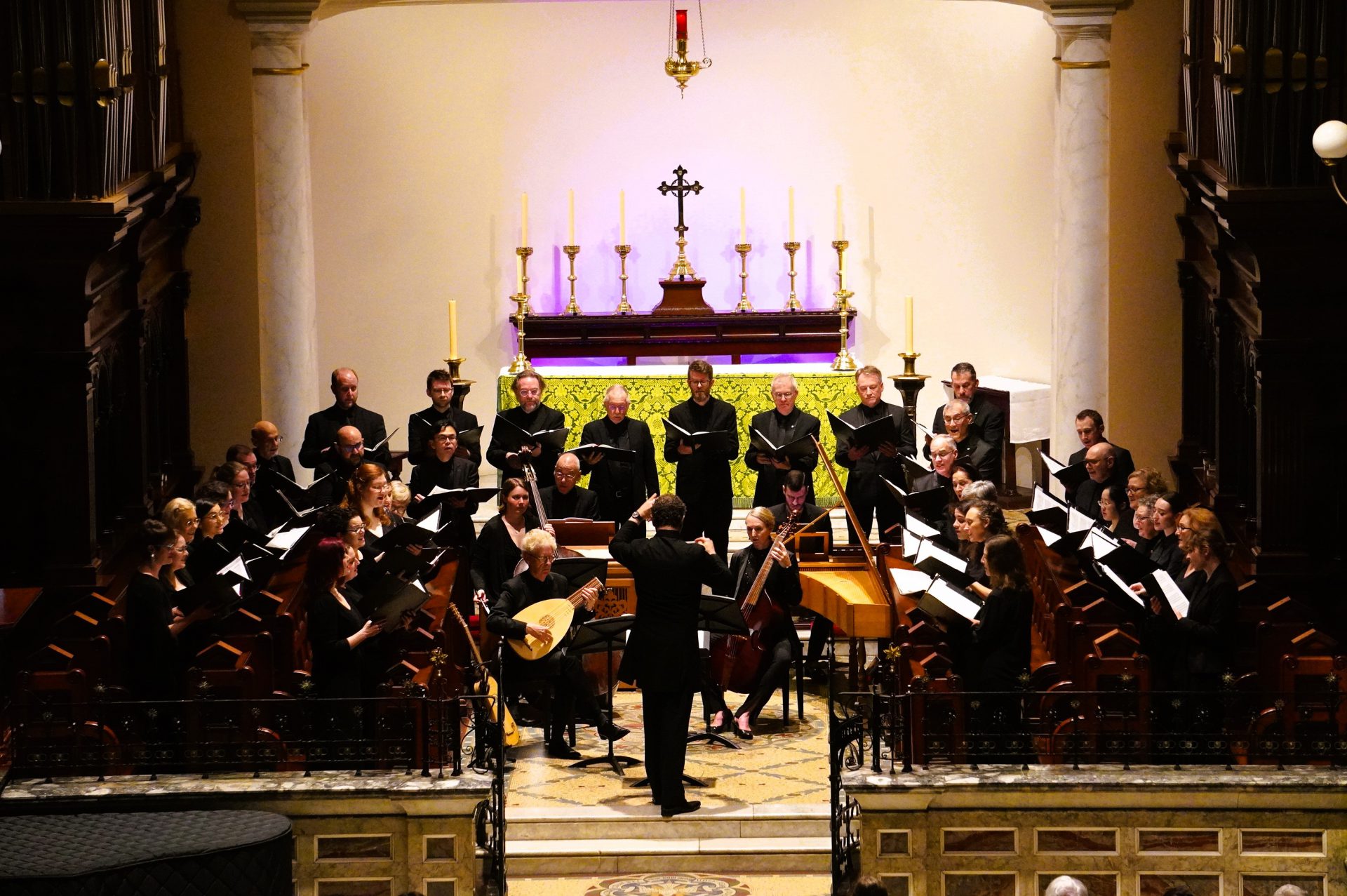Privileging music over the words.
There is something quite fitting about a performance of Voices of the Italian Baroque in Sydney’s St James Church, King Street. St James has done much for the development of the early music scene in Sydney.
The program traced the unfurling of the early Italian Baroque – from its genesis in Monteverdi and Gabrieli, to the later Caldara and A. Scarlatti.
In Gabrieli’s Hodie complete sunt des Pentecostes we see all the hallmarks of the Venetian Baroque – echoes, rapid changes in metre, dance rhythms and dynamics. The polyphony is dense, and there were some slips with entries in different parts of the choir. But the overall effect was festive, and even the uninitiated could sense something of Gabrieli’s natural tendency for trumpets. The closing Allellujah was especially well-done, with its jarring chiaroscuro-like shift between light and dark. Even the thunderstorm was well-timed.
Still denser was the opening Kyrie of Monteverdi’s Messa a 4 voci (SV 190). Like much of pre-Monteverdian polyphony, the subject and counter-subject are rambling and it is hard to get a solid footing. The overall effect is a choral wave which washes over the audience. That is until the introduction of the persistent chromatic motif, which slowly wriggles down a chromatic fourth. The declamation of the Credo introit was powerful. And the best part was the vigorous “propter magnam”.
Carissimi’s Dixit Dominus makes the best use of that most Venetian of choral techniques – cori spezzati. Each part of the choir is pitted against the other in a series of questions and answers that has all the busyness of a Greek drama. Even the strings give a percussive effect, and dynamics abound. It was an upbeat way to close an otherwise serene first half.
Stephen Lalor gave a few palette-cleansing improvisations on the lute between each piece, which was a nice touch and which imitated the short improvisations on the organ that were customary between each setting in St Mark’s.
Caldara’s Crucifixus a 16 voci was somewhat disappointing. The choir struggled to maintain an independence of voices and the effect was an indistinguishable mass of notes.
But things picked up with Scarlatti’s Stabat mater. It is a remarkable piece, but was obviously eclipsed by Pergolesi’s later setting. In the opening part we can see the Neapolitan reverence for the stile antico intermixed with a more modern eye to a good tune. The stretto is dense, and there is much imitation and inversion, but the overall effect does not labour under the heaviness of this all. The sopranos did especially well here.
But by far the highlight of the entire night was Lotti’s Crucifixus a 8 voci. This too is a remarkable piece, and shows that the Italians capitalised upon well-prepared dissonances. That is just as well, for the entire piece consists of overlaid dissonances. The choir clearly prepared intensely for this piece, as the performance was faultless.
